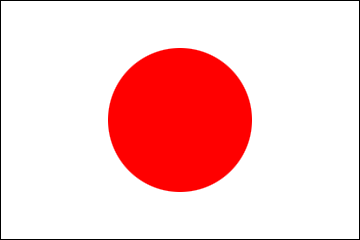Letter from Cebu (13) ”Why do tricycle designs differ from island to island?”
2022/12/28
Letter from Cebu (13)
"Why do tricycle designs differ from island to island?"
"Why do tricycle designs differ from island to island?"
Seven months have passed since I arrived in Cebu. During this period, I had opportunities to visit cities where more than 20 Japanese live, and to ask the mayors and governors there to protect their lives and properties in case of emergency. Those cities are Bacolod in Negros Occidental, Dumaguete in Negros Oriental, Iloilo in Iloilo, Tagbilaran in Bohol, and Tacloban in Leyte, in addition to cities in Cebu.
(Major cities in Visayas and the number of Japanese)
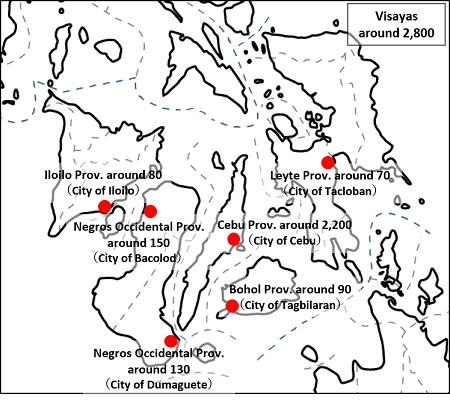
What I found interesting during my business trips was that the designs of a tricycle, a passenger cab with a roof attached to a motorcycle, differ from city to city. Incidentally, tricycles are fundamentally different from tuktuks (motorized 3-wheeled rickshaws) in Bangkok, Thailand, and jeepneys (minibus-like public transport 4-wheeled vehicles) in the Philippines.
I found the tricycle design of Tagbilaran most fascinating. As shown below, it has, not completely square, but angular shape, which must make people happy. People along the streets looked relaxed and happy, which might have been influenced by this cute design.
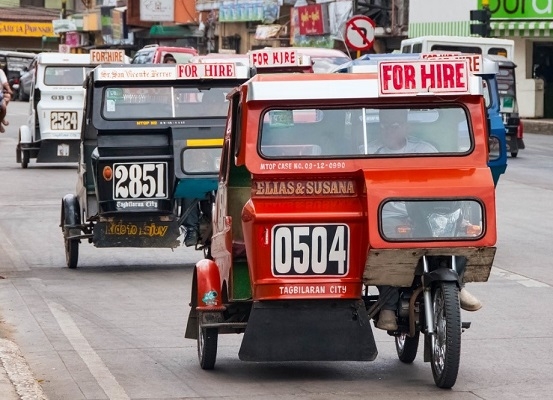
When I visited Dumaguete, the mayor presented me a wooden model of a tricycle. This tricycle has a square shape. But, tricycle that I saw in the town of Dumaguete had a slightly round shaped roof, as shown in the picture below, which give an impression different from the wooden model.
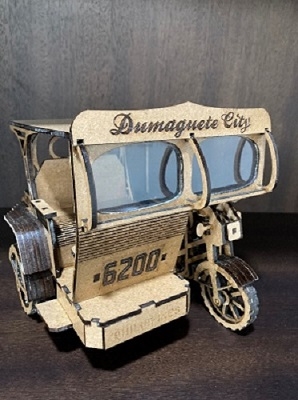
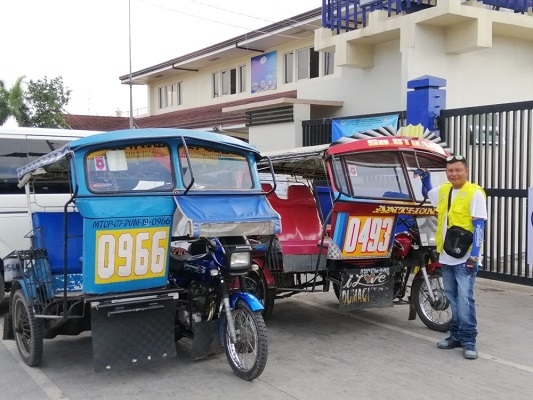
Tricyles in Bacolod were made up of frames, with simple roof were attached.
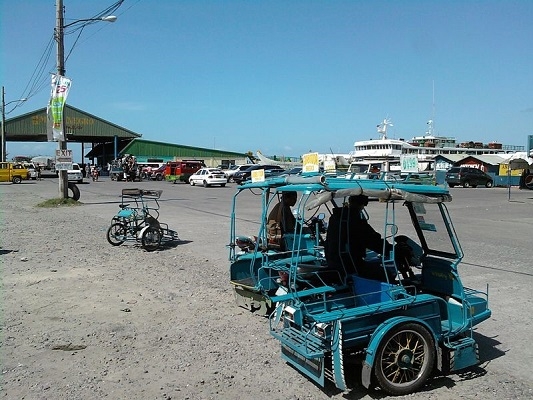
Tricycles in Iloilo were recently reported on a newspaper. As shown below, this is a very futuristic design. According to a report, this design was featured by Hon. Arthur Defensor Jr., the Governor of Iloilo Province.
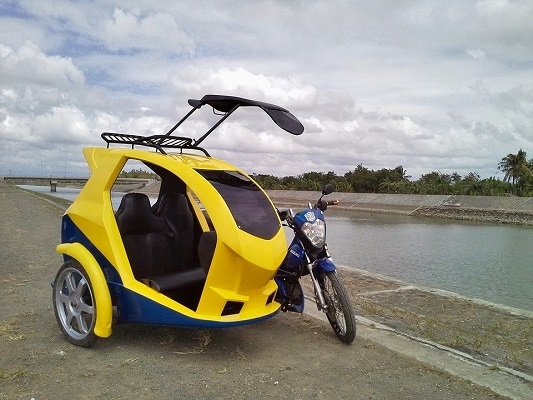
We can hardly see tricycles in Cebu City any more due to the urbanization. But, we can see a number of tricycles in the neighboring cities, such as Mandaue and Talisay.
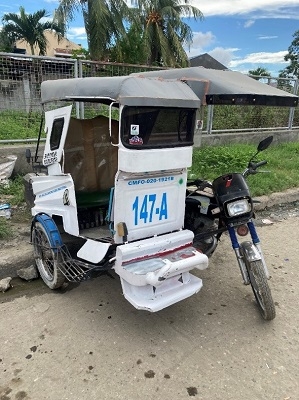
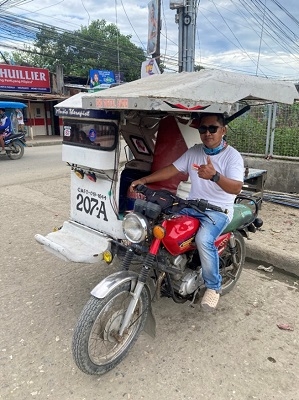
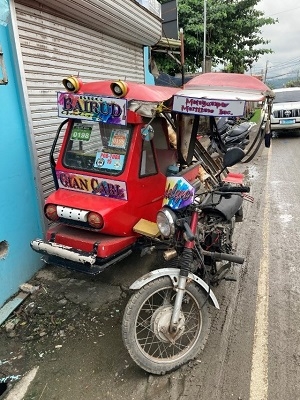
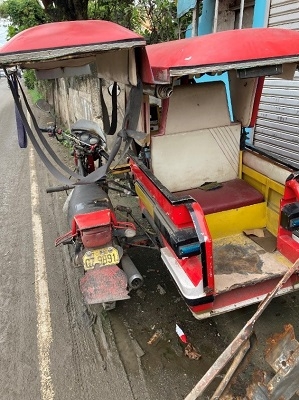
Why are tricycle designs so different from island to island? I visited Mr. Ronnie Baculao, President of Fenrose Marketing, to seek an answer of this question.
According to Mr. Ronnie Baculao, it is the City’s Land Transportation Offices (LTO), which are under the regional Land Transportation Offices of the Department of Transportation, that sets the regulations and safety standards of tricycles, such as total weight, the number of passenger seats, the installation of front wind shield, and luggage spaces. Each city LTO has its own regulations and standards, so that tricycle manufacturers had to adapt to them, resulting in tricycle design unique to each city and island.
Mr. Baculao told me that when he tried to export his tricycles manufactured in Talisay to cities in Northern Mindanao, he had to add a gate and a shield to the back part of a sidecar, because those cities had regulations not to reveal women’s legs, due to the influence of Muslim culture.
Moreover, tricycles in Tagbilaran and Dumaguete have front windshields that cover not only passengers but also a driver. This regulation is said to be out of a consideration of protecting drivers from a sudden heavy rain or flying insects.
According to him, manufacturing skills, machinery and tools, technology, available materials and manufacturing cost of tricycle manufacturers, which exist less than five in each city, affect the design. There is no intellectual property rights for the design, so manufacturers are free to copy other designs, but due to various constraints mentioned above, tricycle designs differ from island to island.
From the Japanese viewpoint, it sounds puzzling why there is no nationally unified regulations and standards. But, the Philippines is renowned for its diversity among islands, saying “each island has its own culture”. This diversity seems to be reflected in the regulations for tricycles.
Hideki YAMAJI

What I found interesting during my business trips was that the designs of a tricycle, a passenger cab with a roof attached to a motorcycle, differ from city to city. Incidentally, tricycles are fundamentally different from tuktuks (motorized 3-wheeled rickshaws) in Bangkok, Thailand, and jeepneys (minibus-like public transport 4-wheeled vehicles) in the Philippines.
I found the tricycle design of Tagbilaran most fascinating. As shown below, it has, not completely square, but angular shape, which must make people happy. People along the streets looked relaxed and happy, which might have been influenced by this cute design.
(Tricycles in Tagbilaran)

When I visited Dumaguete, the mayor presented me a wooden model of a tricycle. This tricycle has a square shape. But, tricycle that I saw in the town of Dumaguete had a slightly round shaped roof, as shown in the picture below, which give an impression different from the wooden model.
(A wooden model of a Dumaguete tricycle, a gift from the mayor and Tricycles in Dumaguete City)


Tricyles in Bacolod were made up of frames, with simple roof were attached.
(Tricycles in Bacolod City)

Tricycles in Iloilo were recently reported on a newspaper. As shown below, this is a very futuristic design. According to a report, this design was featured by Hon. Arthur Defensor Jr., the Governor of Iloilo Province.
(A tricycle in Iloilo)

We can hardly see tricycles in Cebu City any more due to the urbanization. But, we can see a number of tricycles in the neighboring cities, such as Mandaue and Talisay.
(Tricycles in Mandaue)


(Tricycles in Talisay. This tricycle can carry six people, two in the front part of the sidecar, two in its back part, and two in the backseat of a rider.)


Why are tricycle designs so different from island to island? I visited Mr. Ronnie Baculao, President of Fenrose Marketing, to seek an answer of this question.
According to Mr. Ronnie Baculao, it is the City’s Land Transportation Offices (LTO), which are under the regional Land Transportation Offices of the Department of Transportation, that sets the regulations and safety standards of tricycles, such as total weight, the number of passenger seats, the installation of front wind shield, and luggage spaces. Each city LTO has its own regulations and standards, so that tricycle manufacturers had to adapt to them, resulting in tricycle design unique to each city and island.
Mr. Baculao told me that when he tried to export his tricycles manufactured in Talisay to cities in Northern Mindanao, he had to add a gate and a shield to the back part of a sidecar, because those cities had regulations not to reveal women’s legs, due to the influence of Muslim culture.
Moreover, tricycles in Tagbilaran and Dumaguete have front windshields that cover not only passengers but also a driver. This regulation is said to be out of a consideration of protecting drivers from a sudden heavy rain or flying insects.
According to him, manufacturing skills, machinery and tools, technology, available materials and manufacturing cost of tricycle manufacturers, which exist less than five in each city, affect the design. There is no intellectual property rights for the design, so manufacturers are free to copy other designs, but due to various constraints mentioned above, tricycle designs differ from island to island.
From the Japanese viewpoint, it sounds puzzling why there is no nationally unified regulations and standards. But, the Philippines is renowned for its diversity among islands, saying “each island has its own culture”. This diversity seems to be reflected in the regulations for tricycles.
(Mr. Ronnie Baculao, Fenrose Marketing, with tricycles he manufactured.)
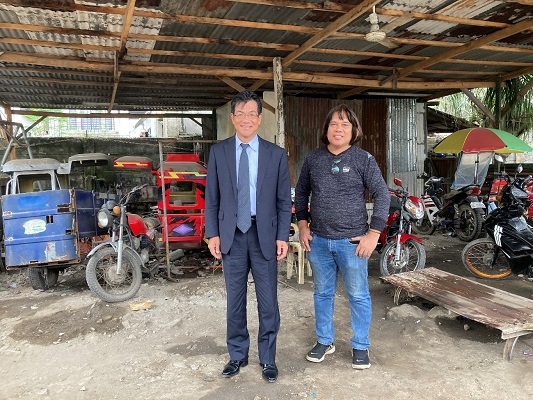

Hideki YAMAJI
Consul General of Japan in Cebu
(end)
(end)
